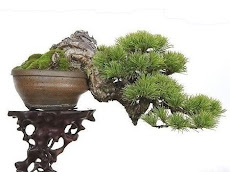

By: William Jones
Interested in growing your own bonsai? The first step is to choose the right type of plant.
Baby jade is a succulent bonsai that is also known as the Elephant Plant, Elephant Bush, or Small Leaf Jade. It is native to South Africa and makes an excellent bonsai for the home or office. It has thick pale-green leaves that are almost round. Water is stored in the fleshy branches, trunk, and leaves.
In natural environs the baby jade grows up to 3 or 4 meters in height. It is a newer specimen to be used for bonsai and is a good plant for beginners, because of its ability to survive for long periods of time without any water. It grow very quickly and can be adapted to any style.
When young, its bark is green, but then it can turn from reddish brown to slate gray. It is smooth and shows leaf scars conspicuously. Its fleshy leaves are almost circular and are about 1.5 cm in diameter. They vary in color from pale gray to pale gray-blue-green to dark green. The stems are reddish, and each pair of leaves is at a right angles to the next pair. The small pink to purplish flowers are star-shaped.
Baby jade can be grown outdoors in full sunlight or indoors with good lighting. It is a tropical plant and can withstand a variety of growing conditions, though it needs to be protected when the temperature drops below 50 F.
The soil needs to be almost dry before you water it. The trunk and branches have a tendency to droop from their own weight and are lovely for long cascades.
Drastic cuts can be made when styling this plant. Let the soil dry completely before removing heavy branches or roots. Water the plant sparingly until it recovers. Remove the terminal bud from any branch that you want to keep from growing any longer. You can shape the tree by pinching off buds and branches that are not growing where you want them to. This plant grows fast and needs to be pinched back frequently in the growing season.
When creating a small bonsai (mame), you can use 1 mm aluminum wire to rotate leaves and branches, though wiring is not as effective as it is with hard-wood species.
Spring is the best time to re-pot, though it can be accomplished at any time in the tropics. The soil needs to be fully dry before re-potting is done. The plant then needs to be kept in a shady spot until new growth appears again. Once new growth appears it can be watered again.
Article Directory: http://www.articlecube.com
William Jones writes for several web sites, on home and recreation topics.








